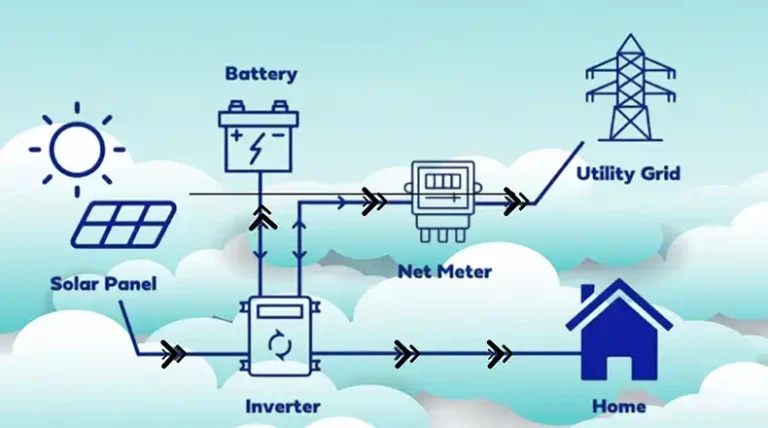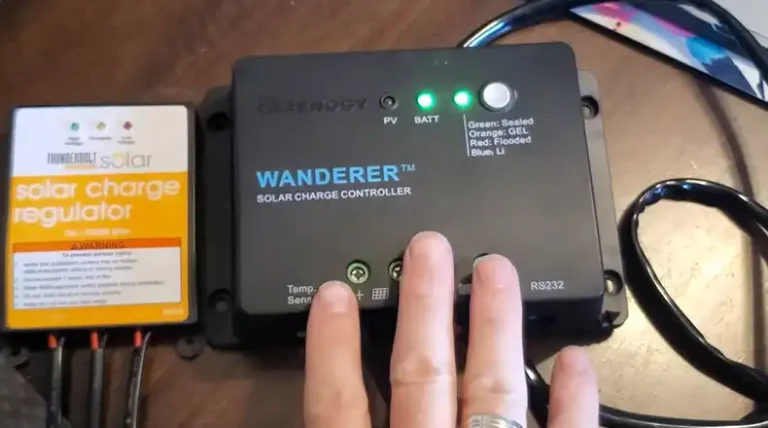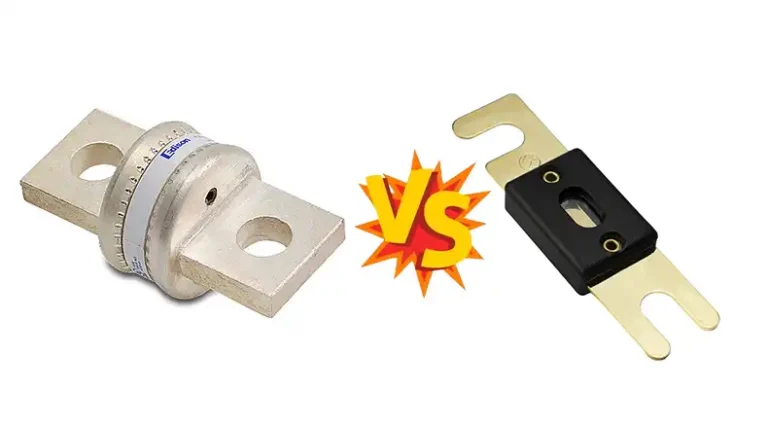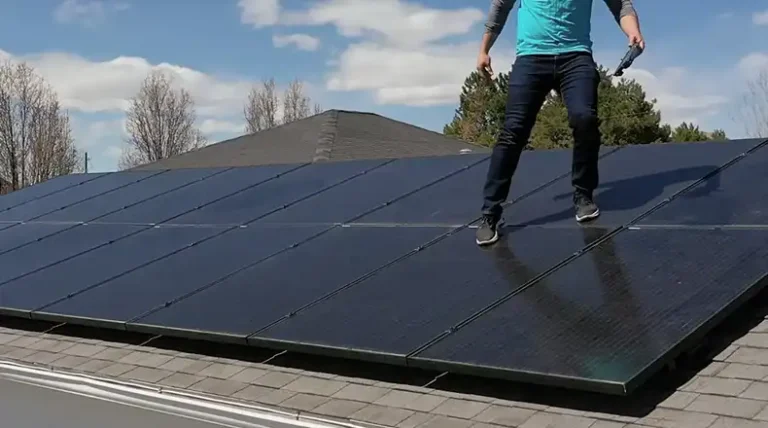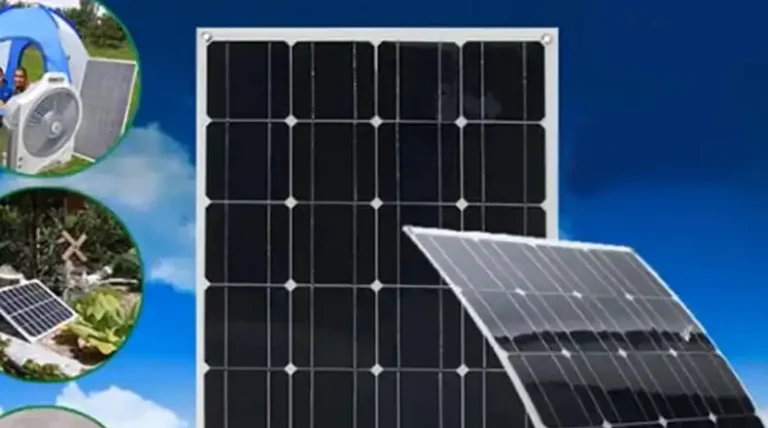What is a PWM Solar Charge Controller? Pros, Cons, Types
Solar charge controllers play a critical role in regulating power from solar panels to batteries in off-grid and grid-tied solar systems. Among the different types of controllers, PWM (Pulse-Width Modulation) controllers are a popular cost-effective option.
But how exactly do PWM solar charge controllers work and what are their key advantages and limitations? In this article, I will explain everything you’ll possibly need to know about PWM solar charge controllers.
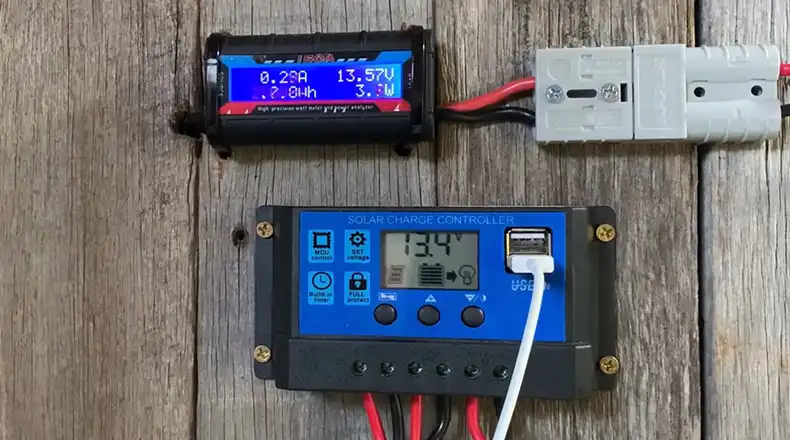
What are PWM Solar Charge Controllers and How Do They Work?
A PWM solar charge controller acts as the intermediary between solar panels and batteries. Using pulse-width modulation, it regulates the voltage and current flow to prevent overcharging the batteries. When the batteries are lower, it allows full current flow to quickly recharge them. As the battery voltage rises, it pulses the current into shorter on/off cycles to prevent overheating and gassing. This optimized charging pattern helps maintain the batteries at peak capacity.
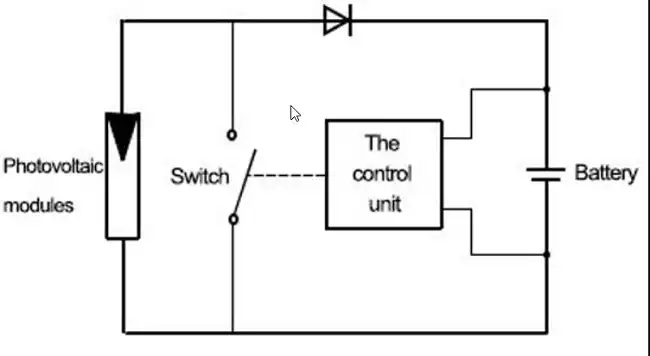
PWM controllers switch the solar input to the battery rapidly on and off to keep the voltage steady. The speed of the switching is adjusted to match the output of the solar array to the changing needs of the battery bank. For example, when a cloud passes, the solar output drops, so the PWM controller slows the pulsing frequency to avoid over-discharging the depleted battery.
MPPT vs PWM
A key difference from Maximum Power Point Tracking (MPPT) controllers is that PWM controllers do not boost voltage from the solar array. They simply switch the direct solar input to the batteries on and off as needed for voltage regulation. The pulsing action also enables other benefits like improved charge acceptance, reduced battery gassing, and automatic adjustment to aging batteries.
Advantages of PWM Solar Charge Controllers
PWM controllers have several advantages that make them a popular choice:
Cost-Effective Design – The simple PWM switching design results in controllers that are economical in smaller solar systems. MPPT controllers with maximum power point tracking abilities cost much more.
Reliable and Durable – With fewer components and a straightforward operation, PWM controllers tend to be very reliable with minimal maintenance needs.
Sufficient for Smaller Systems – The lower efficiency of PWM controllers is not a major disadvantage in smaller off-grid and RV solar systems with fewer panels.
Increases Charge Acceptance – The pulsing action helps improve charge acceptance and reduces the time needed to recharge batteries after depletion.
Reduces Battery Heating and Gassing – By optimizing the recharging cycle, PWM controllers reduce battery heating and gassing, improving battery health and life.
Adjusts for Aging Batteries – As batteries age and become more resistive, PWM controllers automatically adjust the pulsing to optimize voltage regulation.
Recovers Battery Capacity – Studies have shown that PWM charging can help recover lost battery capacity by reducing sulfation and grid corrosion over time.
Disadvantages and Limitations
However, PWM solar charge controllers also come with a few drawbacks:
Lower Efficiency – The direct solar input to battery design limits energy harvesting compared to MPPT controllers by 5-30% depending on conditions.
Voltage Matching – The solar array voltage must match the battery voltage, restricting panel configurations and options.
Unsuitable for Large Systems – PWM controllers are not recommended for large solar arrays with long wiring distances due to voltage drop losses.
Limited Flexibility – Panel selection is constrained as the open circuit voltage must be near the battery voltage. MPPT allows greater flexibility.
To summarize, while the lower efficiency and inflexibility are disadvantages, PWM controllers offer a simple, affordable regulating option well-suited for smaller off-grid solar installations.
Key Features and Components of PWM Charge Controllers
PWM solar charge controllers contain several important features and electronic components:
Voltage Regulation Circuitry – This enables the controller to pulse the current and maintain the batteries at the proper system voltage.
Transistors/MOSFETs – These switching devices turn the solar input to the battery on and off at the PWM frequency.
Status Indicators – LCD screens and LEDs display system information like battery voltage, current, faults, etc.
Discharge Protection – Circuits cut off the battery if it discharges below a safe voltage threshold.
Overcharge Protection – Similar to discharge protection, this prevents battery overvoltage.
Heat Sinks and Fans – Controllers must be kept cool, so heat sinks and fans dissipate generated heat.
Optional MPPT – Some PWM controllers add partial MPPT to increase energy harvesting.
Accurate sizing of the controller to the solar array wattage rating is important to ensure proper operation and prevent overheating damage. Proper installation and wiring according to the manufacturer’s guidelines are also critical.
Types of PWM Solar Charge Controllers
There are two main variants of PWM solar charge controllers:
- Simple ON/OFF Regulation – These are the most basic PWM controllers with simple on/off switching. They have very low cost but also low efficiency.
- Multi-Stage PWM – More advanced PWM controllers use different charging stages like bulk charging, absorption, float, and equalization. This helps optimize battery charging and lifetime.
Some other PWM controller varieties include:
- Standalone Controllers – These only perform the solar charge regulation function.
- Hybrid Controllers – Hybrids add an MPPT charge controller function alongside the PWM controller in one unit.
PWM controllers are available in many different power capacities ranging from 5 watts to several kilowatts to accommodate various system sizes. Getting a controller adequately rated for your solar array wattage is important.
Comparing PWM and MPPT Controllers
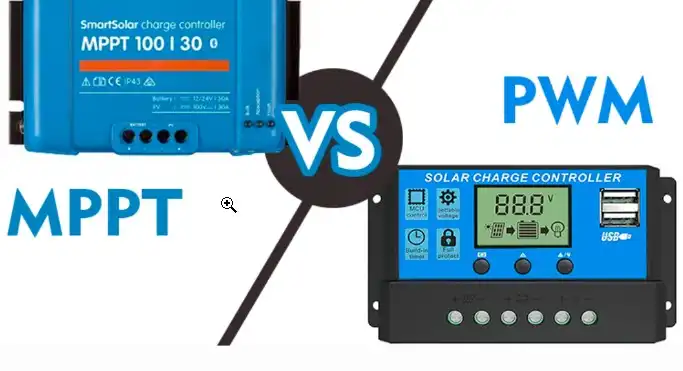
The primary trade-off between PWM and MPPT controllers is cost versus efficiency:
- PWM charge controllers cost much less than MPPT controllers. The simple design and operation keeps their price down.
- MPPT controllers maximize energy harvesting from solar panels by 5-30% depending on conditions. But their advanced DC-DC converter design results in higher cost.
- The increased efficiency of MPPT controllers is most noticeable in large systems with long wiring runs and cold weather when battery voltage drops.
- For small solar installations where controller cost is critical, the lower efficiency of PWM can be an acceptable compromise.
- MPPT controllers also offer greater flexibility in solar panel selection due to their wide input voltage range.
In summary, while MPPT controllers are more efficient, PWM controllers provide an affordable regulating option well-suited for smaller solar power systems.
Recent Advancements in PWM Technology
PWM solar charge controller technology continues to evolve with new developments:
Hybrid MPPT-PWM Controllers – These dual-function controllers provide partial MPPT along with PWM voltage regulation for a balance of cost and efficiency.
Smart Controllers – With built-in microprocessors, these advanced units can monitor system performance and automatically adjust settings for optimized operation.
Improved Efficiency – Enhanced PWM algorithms and switching electronics help increase the power harvesting capabilities of newer PWM controllers.
Communication and Monitoring – Options like WiFi, Bluetooth, USB, and smart device connectivity enable remote monitoring and control.
Maximum Power Point Tracking – Some PWM controllers now incorporate limited MPPT to get partial benefits of both technologies in one unit.
How is PWM regulation different from ON/OFF regulation?
PWM rapidly switches the solar input to the battery on and off hundreds of times per second. ON/OFF regulation simply turns the input fully on or fully off based on battery voltage thresholds. This makes PWM smoother and more efficient.
What size PWM solar controller do I need?
Size your PWM controller based on your total solar array wattage while also considering future expansion plans. In general, keep the controller power rating 20-30% above your peak solar input power.
Where should I install my PWM charge controller?
Install the controller indoors, in an enclosure if outdoors, in a clean and dry location, away from water and heat sources. Ensure adequate ventilation and airflow around the controller.
How do I set up and configure my PWM controller?
Refer to the manufacturer’s manual. Typically you will need to input the battery type, voltage, and desired charging settings. Use recommended settings based on the battery specifications.
What type of batteries work best with PWM controllers?
They work well with all major battery types including sealed lead-acid, flooded lead-acid, AGM, gel, and lithium-ion. Lithium batteries require careful voltage setpoints to avoid damage.

